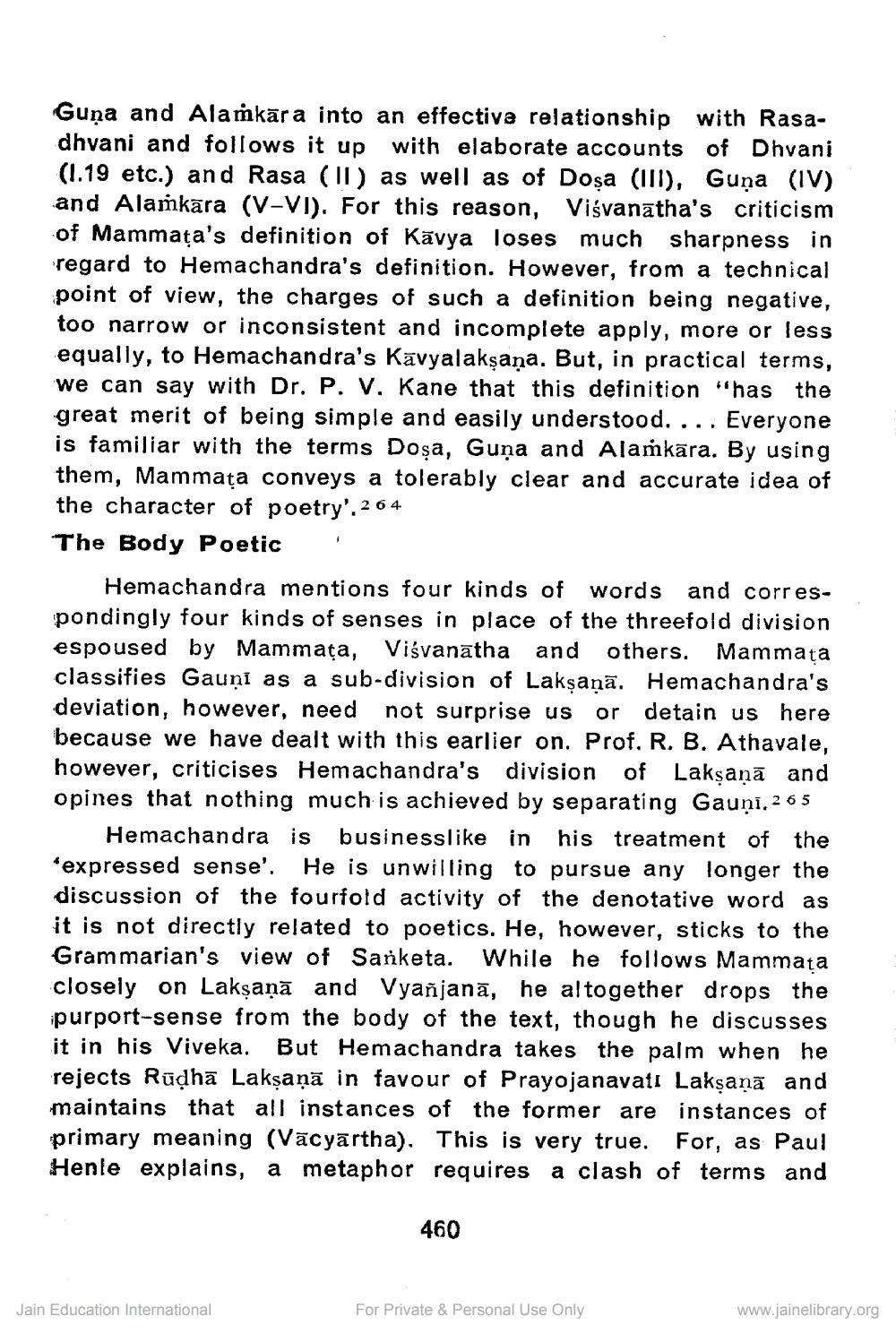________________
Guna and Alamkara into an effective relationship with Rasadhvani and follows it up with elaborate accounts of Dhvani (1.19 etc.) and Rasa (II) as well as of Dosa (III), Guņa (IV) and Alaṁkāra (V-VI). For this reason, Viśvanatha's criticism of Mammata's definition of Kavya loses much sharpness in regard to Hemachandra's definition. However, from a technical point of view, the charges of such a definition being negative, too narrow or inconsistent and incomplete apply, more or less equally, to Hemachandra's Kavyalakṣaṇa. But, in practical terms, we can say with Dr. P. V. Kane that this definition "has the great merit of being simple and easily understood. . . . Everyone is familiar with the terms Dosa, Guna and Alaṁkāra. By using them, Mammata conveys a tolerably clear and accurate idea of the character of poetry'.264
The Body Poetic
Hemachandra mentions four kinds of words and correspondingly four kinds of senses in place of the threefold division espoused by Mammața, Viśvanatha and others. Mammaṭa classifies Gauni as a sub-division of Lakṣaṇa. Hemachandra's deviation, however, need not surprise us or detain us here because we have dealt with this earlier on. Prof. R. B. Athavale, however, criticises Hemachandra's division of Lakṣaṇā and opines that nothing much is achieved by separating Gauņi, 265
Hemachandra is businesslike in his treatment of the 'expressed sense'. He is unwilling to pursue any longer the discussion of the fourfold activity of the denotative word as it is not directly related to poetics. He, however, sticks to the Grammarian's view of Sanketa. While he follows Mammaṇa closely on Lakṣaṇā and Vyañjana, he altogether drops the purport-sense from the body of the text, though he discusses it in his Viveka. But Hemachandra takes the palm when he rejects Rūḍha Lakṣaṇā in favour of Prayojanavati Lakṣaṇa and maintains that all instances of the former are instances of primary meaning (Vacyartha). This is very true. For, as Paul Henle explains, a metaphor requires a clash of terms and
Jain Education International
460
For Private & Personal Use Only
www.jainelibrary.org




